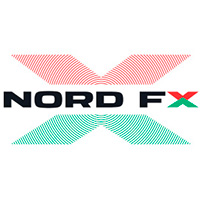At the end of last year, Swiss National Bank (SNB) President Thomas Jordan told news media that both the Swiss franc and the US dollar could be considered safe havens. Shockingly, the Japanese Yen didn’t even get a footnote. Is there substance behind Jordan’s statement, or is it big bank propaganda and politics? Are there any safe haven currencies to turn to in 2023 when the downturn kicks in?
USD
USDCHF is struggling above the immediate resistance of 0.9200 in the early Asian session. As investors become anxious before the release of the United States Personal Consumption Expenditure (PCE) Price Index, CHF is trying to build a base of around 0.9200 for a steady rebound. If that base is breached, some believe USD could go into a rapid freefall, until the Fed hits the rescue button with its usual bag of inflationary tools. US market participants seem to have lessened their risk appetite as S&P500 shows some losses in the Asian session, possibly confirming what many were saying about the overbought US stock market. The US Dollar Index (DXY) may bounce back after slipping towards 101.40, but it seems likely that any bullish moves will be very temporary.
Powell’s coming announcement of monetary policy next week will include US financial reports, rumored to be claiming the USD index is expected to remain strong. Nobody has any metrics to back up that assumption, as has been the case for many hawkish announcements over the last few months.
In addition, DXY is supposedly ready to break below 101.30, but no timeframe was given for that particular forecast. Perhaps more light will be shed on that after next week's FOMC meeting. Without evidence to support an optimistic price action, don’t expect USD to go beyond the $101.30 – $102.00 range just yet.
JPY
So why did the Swiss leave Yen out? Is there trouble brewing in the land of the rising sun, or is Japanese sentiment already so high that US and Swiss banks are fearing an investors exodus to the east when the downturn begins? Japan has a large and, more importantly, stable economy, and a comparatively low inflation rate.
Additionally, the Japanese government has a significant amount of foreign currency reserves, which can be used to stabilize the currency in times of market turmoil. Furthermore, Japan has a high savings rate, which results in a large amount of capital flowing into Japan in times of economic uncertainty, again helping to support the yen.
Additionally, Japan is a large net creditor nation, meaning it has more assets held abroad than foreign liabilities. An impressive list of attributes, of which USD has none. The Japanese yen has long been used as a safe haven currency against the dollar to diversify risk. A long history of low inflation, a persistent current account surplus, external creditor status, and relatively stable political and financial markets.
CHF
As for CHF, traders will be focusing on the coming Real Retail Sales data. According to consensus, economic data is expected to release at 2.6%, compared to a contraction of 1.3% reported earlier. Global inflation projections could be triggered by an upbeat retail demand. CHF is trending high against USD since the early 2000s, with bullish reactions to the 2008 recession. The Swiss franc is now even higher, hovering around parity against the euro. Swiss government officials believe that there is a statistical distortion since most of their international activities take place outside of Switzerland. As a result, its current account and trade surpluses have increased.
Furthermore, Switzerland's current account balance is large relative to its gross domestic product, but its absolute amount is small compared with other large surplus countries such as Japan and even China. It’s important to note, because of Switzerland's small open economy, the exchange rate fluctuations have a greater impact on domestic inflation, so foreign exchange intervention is inevitable for maintaining price stability.
Some independent analysts believe the Swiss franc is excessively overvalued, even though the central bank says they’ve contained upward pressure by purchasing foreign currencies. SNB also claims that foreign exchange intervention is no longer necessary because the Swiss franc is no longer overvalued against the euro. Somebody is wrong, and only time will tell. In the past, Switzerland maintained a negative interest rate policy of minus 0.75% to prevent the currency from appreciating. That rate policy might be an early warning for traders in 2023.
In conclusion
Calling USD a safe haven requires an incredible stretch of the imagination, which will be severely tested throughout 2023. Inflation is lower in Switzerland than in other countries, so the real effective exchange rate isn't very high, but the nominal effective exchange rate is stronger, which includes the currencies of its major trading partners. This brings us to JPY.
Most likely, the Bank of Japan will keep its negative policy rate and yield curve control policy throughout 2023. This means JPY could significantly strengthen against USD and possibly reach 129.00 by Q4.
When it comes to trading JPY, big-brand financial media outlets may not be a source of inspiration right now… especially those affiliated with the US economy. If you are planning to trade forex throughout 2023, check out the JPY pairs every time you see a major currency fall and start taking notes.
 Trump has declared that the United States could become the global capital of the crypto industry. To achieve this, he proposes reducing regulatory pressures.
Trump has declared that the United States could become the global capital of the crypto industry. To achieve this, he proposes reducing regulatory pressures. Forex trading is a captivating endeavor, promising both active and passive income streams. Yet, mastering forex is a continuous journey that transcends expertise levels, be it a novice or a seasoned trader...
Forex trading is a captivating endeavor, promising both active and passive income streams. Yet, mastering forex is a continuous journey that transcends expertise levels, be it a novice or a seasoned trader... In a resounding victory, NordFX, a prominent brokerage firm, has been crowned the "Best News & Analysis Provider" of 2023...
In a resounding victory, NordFX, a prominent brokerage firm, has been crowned the "Best News & Analysis Provider" of 2023... Errante, the premier online broker, is dedicated to delivering top-tier services and forging long-lasting, trust-based relationships with our clients. Our mission is to enhance your online trading journey...
Errante, the premier online broker, is dedicated to delivering top-tier services and forging long-lasting, trust-based relationships with our clients. Our mission is to enhance your online trading journey... Gold, a precious metal revered for its value for centuries, has found its place in the world of trading. Trading gold has become a popular way to invest in the commodity market...
Gold, a precious metal revered for its value for centuries, has found its place in the world of trading. Trading gold has become a popular way to invest in the commodity market...